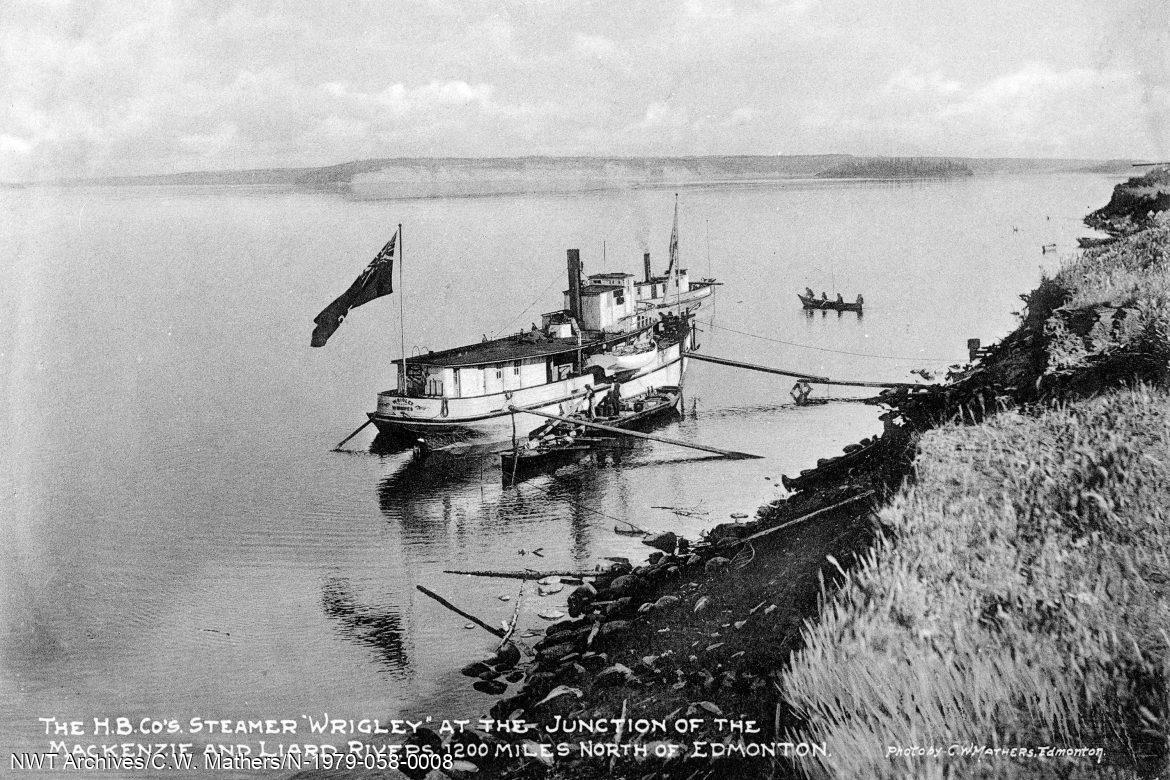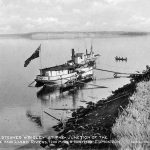1880s
A Northern Transportation Revolution
Before 1880, long-distance travel throughout the North was not for the faint of heart. For non-Indigenous traders, getting from the Arctic Ocean to Hudson Bay Company headquarters in Montreal was an intricate exercise of paddled boats, York Boats, portages, sweat and endurance. With the early 1880s construction of the Canadian Pacific Railway through southern Alberta, the transportation connection with the east was vastly improved. The Hudson’s Bay Company took the opportunity to modernize its transportation system in the North.
Linking this southern railway system with the remote trading posts of the North required the construction of three steam-driven riverboats to operate on the Mackenzie, Slave and Athabasca rivers. The total distance along these waterways, from Athabasca Landing (now Athabasca, north of Edmonton) to the Mackenzie Delta, was 3,000 kilometres.
In 1883, the Hudson’s Bay Company launched the SS Grahame at Fort Chipewyan. Its regular run was from Fort McMurray, in northeastern Alberta, to Smith Landing (now Fort Fitzgerald) on the Slave River near the current Alberta-Northwest Territories border. Three years later, in 1886, the S.S. Wrigley was launched at Fort Smith and began regular freight and passenger service to the Hudson’s Bay Company trading posts along the Slave River, Great Slave Lake, and the Mackenzie River as far north as the Peel River trading post of Fort McPherson. The final link in this unique transportation system came in 1888 with the launch of the S.S. Athabasca at Athabasca Landing. With the change in transportation came more and more people from the South, some for the adventure, some to establish economic opportunities and some to search for resource exploitation opportunities. Faster, easier access also allowed swifter movement of furs, products and people to the developing communities and, unfortunately, disease, greater exposure to southern colonial practices and settlement of non-Indigenous people.




